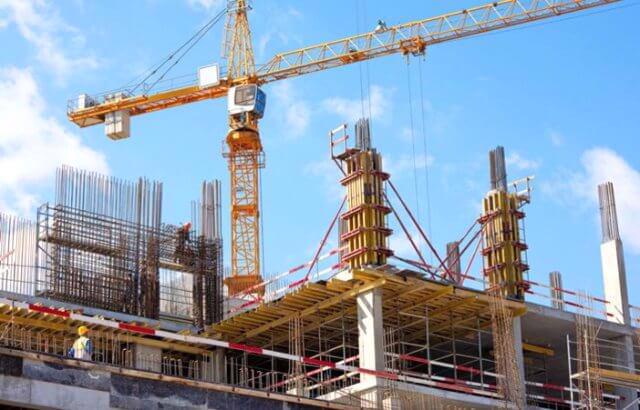Real estate prices in Ho Chi Minh City continued to remain elevated in 2024, with most newly-launched apartment projects priced between VND80 and 140 million ($3,200 and $5,600) per sq m. The supply of mid-range apartments has been limited to large suburban developments, while the affordable housing segment has all but disappeared.
According to Mr. Le Hoang Chau, Chairman of the Ho Chi Minh City Real Estate Association, apartments priced below VND25 million ($1,000) per sq m have completely vanished from the market since 2021. Meanwhile, high-end housing now accounts for 70-80 per cent of market supply. New projects are predominantly high-end and luxury apartments aimed at the wealthy, with prices ranging from VND100 to 500 million ($4,000 to $20,000) per sq m.
If the current imbalance in supply and demand across various real estate segments persists, it may have several repercussions, including the risk of a real estate bubble, growing inequality in housing access, and increased pressure on social welfare systems.
Hard-to-find apartments
The average price of primary apartments in Ho Chi Minh City had reached VND66 million per sq m ($2,640) by the third quarter of 2024. Finding primary apartment projects priced near VND50 million ($2,000) per sq m is now a challenge. Most new supply is focused on the high-end and luxury segments, according to a report from CBRE Vietnam, priced above VND100 million ($4,000) per sq m.
A market survey conducted in December found that some projects in Ho Chi Minh City are priced above VND100 million ($4,000) per sq m. For instance, the Global City project in Thu Duc city has its first two apartment blocks priced from VND100 to 140 million ($4,000 to $5,600, excluding VAT) per sq m. Elsewhere, The Eaton Park project, developed in District 2 by the Gamuda Land Group, offers apartments at VND120 million ($4,800) per sq m. The King Crown Infinity project, also in Thu Duc city, is priced at VND110-160 million ($4,400-$6,400) per sq m, while Son Kim Land’s The Metropole project in the Thu Thiem New Urban Area in District 2 is priced at VND300-400 million ($12,000-$16,000) per sq m.
Projects below VND100 million ($4,000) per sq m include Vinhomes Grand Park, at VND60 million ($2,400) and Essensia Sky in Nha Be district, at VND70 million ($2,800).
High-end apartments are being sold in Thu Thiem for VND140-180 million ($5,600-$7,200), excluding VAT) per sq m. For example, a 55 sq m (one-bedroom) apartment sells for VND7.5 billion ($300,000, excluding VAT), while an 88 sq m (two-bedroom) apartment sells for VND15 billion ($600,000, excluding VAT).
According to real estate agents the DKRA Group’s Q3 2024 report, ultra-luxury apartments in the southern city stand at nearly VND500 million ($20,000) per sq m, with the highest-priced villa or townhouse hitting VND700 billion ($28 million) per unit and the lowest starting at VND5.3 billion ($212,000). The demand for townhouses and villas remains low, with prices steady but still high. Supply is growing in neighboring provinces like Long An, Dong Nai, and Binh Duong.
DKRA forecasts that Grade A and luxury apartments will continue to dominate the market, accounting for nearly 50 per cent of all new launches, with prices ranging from VND85 to 130 million ($3,400 to $5,200) per sq m. Meanwhile, Grade B and C apartments are shifting to nearby provinces such as Long An, Binh Duong, and Ba Ria-Vung Tau.
Comparing prices, a 200 sq m semi-detached villa on the outskirts of Ho Chi Minh City costs about VND15 billion ($600,000), while at this price you could only purchase an 85-90 sq m high-end apartment near Thu Thiem. Similarly, the cost of a townhouse in an outlying area would be VND7.5 billion ($300,000), which would only buy a 55-60 sq m apartment in District 2.
This trend shows that apartment prices in Ho Chi Minh City are now comparable to those of townhouses or villas in suburban areas or neighboring provinces, highlighting a growing disparity in the city’s real estate market.
Experts from the DKRA Group suggest that the focus on high-end products by developers, while the mid-range segment is oversupplied, is one of the main factors behind the high prices. The shortage of affordable apartments, which have all but disappeared from the market, affects the overall market conditions. “This imbalance in supply is limiting options for buyers, and as a result, the market outlook remains uncertain,” Savills concluded.
Looking ahead, Ms. Giang Huynh, Head of Research & S22M at Savills Advisory, predicted that Ho Chi Minh City will remain a market for mid-range and high-end housing, with limited options in the affordable segment. Supply is expected to improve, with more than 50,000 apartments coming from 76 new projects by 2027, mostly in Thu Duc city (49 per cent), District 7 (12 per cent), and Binh Tan district (9 per cent).
Risk of suburban decay
Experts and real estate developers have pointed out that the supply of available, “clean” land in Ho Chi Minh City has been nearly exhausted, and legal challenges are limiting the supply of new apartments, driving prices up rapidly. This has pushed developers to expand into suburban areas or nearby provinces, where land remains available but infrastructure is still underdeveloped.
This explains why real estate projects in suburban areas like Dong Tang Long (formerly District 9, now part of Thu Duc city), and the Nhon Trach New City in Dong Nai province have been on the market for a long time with limited population growth. Despite this, property prices in these areas continue to rise.
For example, townhouses in Dong Tang Long are priced at VND6.2-8 billion ($248,000-$320,000) and villas at VND9-40 billion ($360,000-$1.6 million). Many investors are struggling, however, to sell properties they bought, even though prices have increased.
Ms. Mai Thao, a buyer of a villa in the area, has been trying to sell it for VND10 billion ($400,000) but there have been no buyers. Real estate agents point to the lack of infrastructure and amenities as obstacles to sales. Many properties nearby remain unoccupied, and the area has a desolate, abandoned feel.
In neighboring provinces like Binh Duong, apartment prices range from VND30 to 40 million ($1,200 to $1,600) per sq m. In Dong Nai and Long An, residential projects are primarily land-based, as infrastructure is underdeveloped, and travel times to Ho Chi Minh City are longer.
Ms. Giang Huynh believes the potential for suburban real estate is long-term. Once key infrastructure projects, such as Belt Road No. 3, are completed, travel times to Ho Chi Minh City will fall, boosting connectivity and providing more housing supply to meet growing demand from residents and investors.
Infrastructure projects in Ho Chi Minh City, including the Nam Ly Bridge in Thu Duc city and the Nguyen Van Linh underpass in District 7, have been completed. Major projects like Belt Road No. 3, Metro Line No. 1, and the An Phu interchange are expected to improve connectivity and could provide opportunities for suburban developments to thrive.
However, Mr. Vo Hong Thang, Investment Director at the DKRA Group, noted that it will be challenging for properties in suburban areas priced above VND10 billion ($400,000) to attract buyers due to the lack of infrastructure and lingering market uncertainty.
Ms. Giang Huynh also highlighted that buyers in Long An and Dong Nai are more interested in securing property as a second home than a primary residence. In Binh Duong, the market remains uncertain, with an increasing number of apartment projects and rising prices.
High prices have been a major issue in Ho Chi Minh City’s real estate market throughout 2024, making sales difficult. If this trend continues into 2025, with land prices expected to rise under new regulations, affordable housing in suburban areas or satellite cities will remain out of reach for most middle- and lower-income residents. These areas are likely to serve wealthier individuals looking for investment opportunities or second homes. There is growing concern that such factors could lead to the abandonment of suburban developments.









 Google translate
Google translate